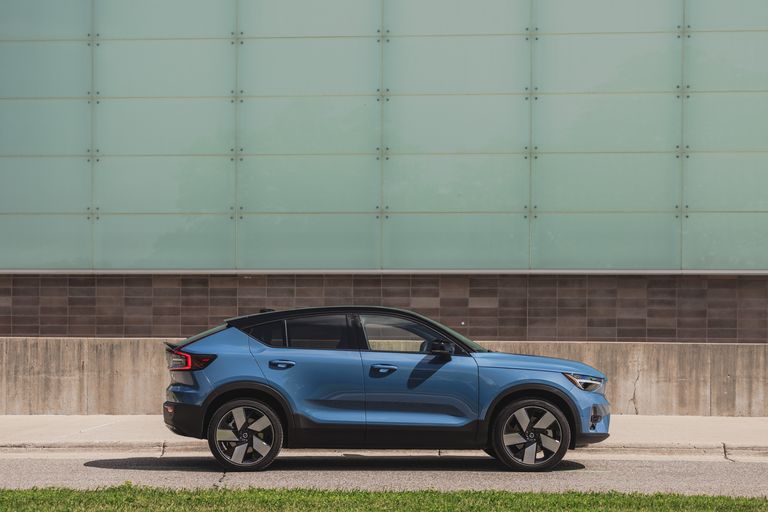Tested: 2022 Volvo C40 Recharge Leans on Style

Volvo’s compact EV crossover dons a sleeker if less practical slope-back form.
Automakers are understandably anxious not to let crossovers succumb to the miasma that doomed wagons and minivans. Call it the stink of being square, which turned those body styles into icons of the grocery-store parking lot. Luckily for carmakers, injecting insouciance into a people hauler seems to require nothing more than adding some degree of declination between the B-pillar and rear fascia. That’s how Audi creates its crossover Sportbacks, Mercedes and Porsche their crossover coupes, and BMW its even-numbered SUVs.
Volvo has joined that Germanic party with the C40 Recharge. The C still stands for “crossover,” the rake in the roof just making this the more dashing counterpart to the traditionally Swedish XC40 Recharge. The C40 Recharge sits on the same Compact Modular Architecture as the XC40 (said architecture also underpins the sister-brand Polestar 2). The C40 Recharge is also driven by the same dual-motor, all-electric powertrain with 402 horsepower and 486 pound-feet of torque and juiced by a battery with the same nominal 78.0-kWh capacity, 75.0 kWh of it usable.
There are entries in the gains and losses columns when comparing the C40 Recharge and the XC40 Recharge. In the C40 losses column, the roof sits 2.2 inches lower than that of the XC40, and rear-seat headroom is down by 1.6 inches, although there’s no issue fitting a five-foot-11 frame, with plenty of room to crane the neck. Thanks to the sloping roofline, the luggage space behind the second row takes the obvious hit and is down three cubes (17 to 20) compared with the XC40 Recharge.
And then there’s the back glass, tabbed for a gain and a loss. Volvo claims that the aerodynamic work the designers did aft of the B-pillar, from the roof winglets that cover the liftgate hinges to the rear spoiler, extended range by 6 percent. A software update to the 2022 XC40 Recharge increased last year’s EPA-rated 208-mile range to 223, so the C40’s 226-mile EPA range figure doesn’t make the impact it could have. We managed to cover 200 miles on our 75-mph highway route, though, 20 miles more than the XC40 Recharge.
However, the work astern put such a steep rake in the hatch that the rear window presents the effective height of a shoebox. Looking in the rearview mirror shows the upper or lower half of a car behind, but not both. The best view of what’s behind is in the side mirrors.
The rest of the C40 Recharge emphasizes Volvo’s move into an increasingly eco-conscious and digital future. There will be no internal-combustion version of the C40 Recharge, with the company turning its gaze to 2030, when it aims to sell only EVs.
